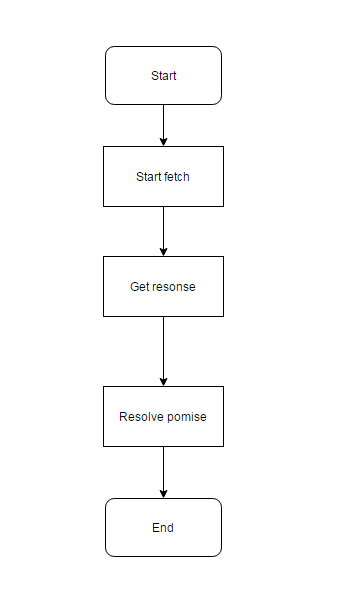Introduction
Do you prefer the usage of "ES6 Promise"? If you do, you will like the usage of "Fetch" too.
Compared to "Ajax", "Fetch" owns a competitive feature: promise, which synchronize asynchronous methods elegantly, the meaning and the usage of "Fetch" can be understood easily as well.
Here, I'd like to list the most common usage of "Fetch".
Flow
The flow of fetching staff is simple:

Usage
Fetch once
Suppose we would fetch the content of an remote html
fetch('./data/test.html')
.then(function (response) {
return response.text() // return a promise
})
.then(function (body) {
console.log( body ) // log: html content
})
Fetch data right after the other data fetched(Chain)
If we'd like to fetch data(json) right after fetching content(html)
fetch('./data/test.html')
.then(response => {
return response.text()
})
.then(body => {
console.log(body)
return fetch('./data/test.json') // return a promise(`fetch('/url')` will return a promise )
})
.then(response => {
return response.json() // return a promise too
})
.then(json => {
console.log(json) // log: json's data
})
Complete all fetching action
Promise.all([
Promise.resolve(fetch('./data/test.html')),
Promise.resolve(fetch('./data/test.json'))
]).then(data => {
console.log('Two requests are both completed!')
})
API
Github Fetch Document
Offcial Manual
Conclusion
Fetch, well done!